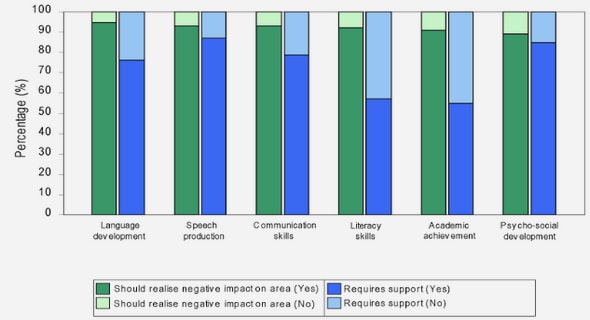(Downloads - 0)
For more info about our services contact : help@bestpfe.com
Table of contents
1 The gut microbiota: a challenging complexity
1.1 The gut microbiota in humans
1.2 Metagenomics
1.2.1 Different approaches
1.2.1.1 Targeted metagenomics
1.2.1.2 Shotgun metagenomics
1.2.2 Sequencing technologies
1.2.2.1 Illumina technology
1.2.2.2 Ion TorrentTM technology
1.2.3 Assembly
1.3 Metaproteomics
1.3.1 Metaproteomics experimental workflow
1.3.2 LC-MS/MS analyses
1.3.3 Interpretation of LC-MS/MS data
1.3.3.1 Peptide-spectrum matching
1.3.3.2 Protein identification and grouping
1.3.3.3 Spectral Counting quantification
1.3.3.4 eXtracted Ion Chromatogram quantification
1.3.4 The rise of metaproteomics in the last decade
1.3.5 The challenges of metaproteomics
1.3.5.1 Sample preparation
1.3.5.2 Bioinformatics analyses
1.4 Cardiovascular artery diseases
1.5 Evidence for a relationship between gut microbiota and CAD
1.6 The ProteoCardis project
1.7 Thesis objectives
2 Mass spectra interpretation without individual metagenomes
2.1 The ObOmics study
2.2 Scientific questions
2.3 Methods
2.3.1 Samples preparation and injection
2.3.2 Interrogated databases
2.3.3 Interrogation strategies
2.3.3.1 Classical identification
2.3.3.2 Iterative identification in two steps
2.3.3.3 Iterative identification in three steps
2.3.3.4 Iterative identification used in the experiments
2.3.4 Construction of the datasets
2.3.5 Peptide and subgroup quantification
2.3.6 Evaluation criteria
2.4 Results
2.4.1 Gain of identification with MetaHIT 9.9
2.4.2 Identifications specific to each database
2.4.3 Reproducibility of the identifications with MetaHIT 3.3 and MetaHIT 9.9
2.4.4 Gain of identification with the iterative strategy
2.4.5 Identifications specific to each interrogation strategy
2.4.6 Reproducibility of the identifications with the classical and the iterative strategy
2.5 Conclusion
3 Two examples of clinical data interpretation with MetaHIT databases
3.1 Metaproteomic features related to weight loss
3.1.1 Scientific context
3.1.2 Methods
3.1.3 Results
3.1.4 Conclusion
3.2 Metaproteomic features related to intestinal bowel diseases
3.2.1 Scientific context
3.2.2 Methods
3.2.3 Results
3.2.3.1 Metaproteomic profiling of stool samples
3.2.3.2 Search for IBD signatures in stool samples
3.2.3.3 Search for signatures between IBD phenotypes
3.2.4 Conclusion
4 Mass spectra interpretation in the context of the ProteoCardis cohort
4.1 Methods
4.1.1 Metagenomics sequencing
4.1.2 Metaproteomic analyses
4.2 Development of MetaRaptor
4.3 Assembly of the individual metagenomes of the ProteoCardis cohort
4.4 Performance of the individual catalogues
4.5 Metaproteome landscape in cardiovascular diseases
5 XIC quantification
5.1 Challenges of XIC quantification in metaproteomics
5.2 Chromatographic alignment
5.3 Correction of XIC
5.4 Imputation of missing data
5.4.1 Imputation of missing values in classic proteomics
5.4.2 Imputation of missing values in metaproteomics
5.4.3 Imputation implemented in the ProteoCardis study
6 Can the ProteoCardis data be improved by normalization methods?
6.1 Ascertainment of the batch effect
6.2 Normalization methods
6.2.1 Methods for SC normalization
6.2.2 Methods for XIC normalization
6.3 Evaluation of the normalizations
6.3.1 Normalization of SC
6.3.2 Normalization of XIC
6.4 Conclusion on the correction of technical variability
7 Exploration of statistical approaches for biomarker discovery
7.1 Methods
7.1.1 Multiple testing approach
7.1.1.1 Resampled FDR
7.1.1.2 Modelling of SC
7.1.1.3 Modelling of XIC
7.1.2 Random forests approach
7.1.2.1 Principle
7.1.2.2 Typical preprocessings
7.1.2.3 Implemented parameters and validation scheme
7.2 Results
7.2.1 Preliminary: evaluation of the batch effect
7.2.2 Results with multiple testing
7.2.3 Results with random forests
7.2.4 Relationship between the two approaches
7.3 Perspectives on statistical analysis
8 Conclusion and perspectives




